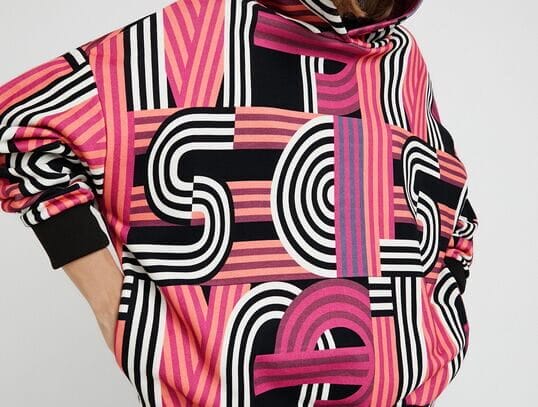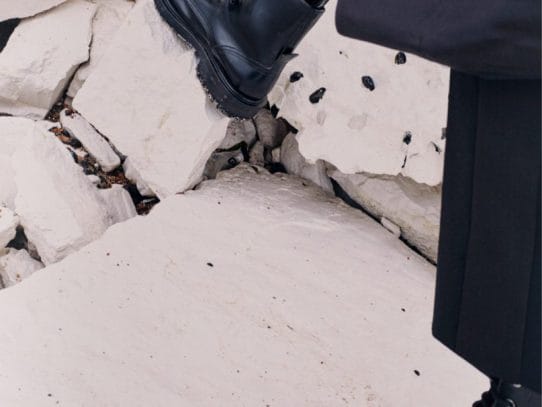After II -Acrylic and oil on paper on panel 12 x 18 inches NFS
Art is an ever-evolving form of expression that continues to challenge the boundaries of creativity and imagination- and there are new trends to explore. The most popular art styles of today reflect the diversity and complexity of the modern world, each with their unique aesthetic and cultural significance. In this article, we’ll explore the latest art renaissance that celebrates both tradition and innovation.
The year 2024 has seen a surge in art with a laser focus on the theme of people in nature reconnecting with their surroundings. With the loss of human contact in the early days of the pandemic, there has been a greater appreciation towards Representational/Figurative Art. There has been a quiet return to an older way of painting. To standards from the past. A time when art and craftsmanship were one and the same. The artists working in this way are called figurative painters. Their work are reminiscent of the old masters with an added dose of modernity. We will see more interest in artists experimenting with the human figure and their surroundings through representational and figurative art and movement.
In recent years, however, the increasing prominence of new figurative work has been a notable feature in exhibitions at top galleries and institutions. The accelerating trend manifests through drawings, paintings, and photographic prints featuring flora, fauna, and rich landscapes -seemingly a way to inventory and protect them. The art has to have a contemporary, compelling, and current perspective- with a symbolic undercurrent or narrative that allows the viewer to explore the painting. The effect has been gaining momentum so much that many industry experts have talked about a ‘resurgence’ in figurative art.
In 2025, expect to see more botanical and natural themes coming to the fore. And the environmental key themes will extend to bedding, dinnerware, and even fashion. Highlighting an artist’s freedom in expression seemingly catapults the figure itself because instead of having a tight, classical image, the artist can interpret the mood or emotion in the way that suits the composition. Overall, the art buyer market is interested in blending heritage with fresh vibes of modernity. More to my point, millennial collectors are drawn to figurative work. Young buyers also demand figurative human figures in regional landscapes that lend the viewer a sense of spiritual intrigue.
Portraiture is also experiencing a resurgence in popularity. Today, modern portraiture is expected to take on a more vibrant and luminous style, offering new perspectives to an art form as old as time.
The Structural Anatomy and Expressive Design of the Human Form:
Joseph A. Miller is an Associate Professor of Art at S.U.N.Y. Buffalo State, teaching drawing and painting since 1997. Miller’s work is in numerous public and private collections. It has been shown internationally in Finland, China, Poland, and the Czech Republic, as well as across the United States, from Berkeley, California, to Cambridge, Massachusetts. His work is represented by the Art Dialogue Gallery in Buffalo, NY, and the West End Gallery in Corning, NY.
Miller grew up in rural Northeastern Pennsylvania – and surprising enough, a landscape that resembles an Andrew Wyeth painting. In his art, Miller’s favorite subjects are the land and people in his world. He has resided in Buffalo, NY, since being offered a teaching position at SUNY Buffalo State University in 1997. All that culture opened him up to a vast world full of possibilities.

Oil and gold leaf on canvas on panel
24 x 39 inches
NFS
“Crossing” – The title reflects the innocent-looking image in nature, but it appears to have apparent undertones. It’s meant to reflect the innocence of the human condition in nature. It is a chance to focus on the reawakening currently happening in the art world-implementing studied techniques and skills but painting for modern times. There is something living in the paintings of Joseph A. Miller. Technically they are brilliant but there is more going on. He manages to bring forth the inner vitality of the people he paints. Miller shares the initial sentiment that the figure is his most challenging subject within representational arts. For him, reflecting humans in a representational and figurative rather than idealized way seems the most important.
Like Wyeth, Joseph A. Miller is an American visual artist, primarily a representational and figurative painter and also drawing and painting in regional settings that seemingly inspire him intellectually and artistically. I believe he is also an abstractionist, portraying subjects in a new way relevant for a robust market today. The difference is that Miller is painting in a new way that is much more meaningful to a a new generation. He has taken something old and re imagined it in a fresh contemporary way. This approach, combined with his considerable skill and talent, create paintings that are truly unique.
I particularly like the way he gets the people in his paintings to glow. Vulnerability is a theme that often is a recurring thread in his artwork. Still, in the present, metaphoric coding focuses on an even greater level and as a reflection of the present. For Miller, drawing and painting in present times is remembering and inviting essential elements from the past and bridging them to today’s modern visual language. Upon reviewing his work, I wondered whether or not Miller ‘s aim is to succeed in conveying that intention through his portrayal of the human figure and light in an vast yet confined environment?
Figure drawing is the art of sketching the human figure, often done live with a nude model standing or sitting in a pose that emphasizes the figure. One of the most critical factors in human figure drawing, sketching, and painting is proportions – where Miller is well-skilled. To draw a human figure well, you have to understand proportion, gesture, and human anatomy. Although gesture is the most essential element, an artist has to start with proportion. This process helps the artist capture the essence of the human body’s musculature, texture, and postures. The easiest way to draw people is with the ‘Ball-and-Socket’ technique, in which the artist sketches several conjoined ovals to form the body parts of the human figure and draft the figure’s pose – a way of exploring the human form or human psychology.
However, it gets more complicated when the emphasis is on learning the shape and movement of the human form. You see, the essence of figure drawing is to attempt to capture life as it is, or at least as it appears to the artist. The human figure in art carries an immense significance, being the most direct way art can address the human condition. That complexity is not just from learning how to paint the human anatomy accurately but also from deciding how to convey the figure’s emotion, life, and experience to fit the composition. Add to that an artist’s style—from communicating all the details to fixating on the atmosphere—and you have many elements that bring the image to life.
Miller continues, “I focus primarily on the human figure depicted in environments that create a context for psychologically charged open-ended narratives. Many of these narratives explore power and vulnerability, enchantment, and play. Children are often featured because children often play.” From a technical standpoint, Miller’s artwork has become more successful over time, and he leans into a complicated textural approach to the materials that help manage his process, which is directly reflected in his paintings in that they tend to contain magnificent canvases and are generally and psychologically deep compositionally. There is much to contemplate as the drawings and paintings pull the viewer in many directions.
“Images of figures or figures in landscapes, in groups or isolation, share a common feeling of significance. Wholly absorbed within themselves or the dialogue shared between one another, they wait for the unfolding of their private story“.- continues -Joseph A. Miller.

Charcoal and pastel drawing
NFS
“Drone” eloquently combines two human figures in a gentle and playful move through nature. The drawing conveys a feeling about love, mindfulness, and life as a journey. As a result, it is a harmonious intertwining in composition, proportion, and style. Miller’s approach is intimate and intense. His drawing is all we hope for in an image, the ability to get very close to a private moment and remain there as long as we need to. “Drone” depicts two young girls who have discovered, to their delight, what might be real, or might be a toy. Either way, it is a potent symbol of destruction and contemporary warfare. It is also a mechanism of flight; it is both deadly and romantic. Now, in pretend flight only, it glides between the branches of a Quaking Aspen tree; that also provides shadows of cover for the two figures lost in their own enchantment. Each art form embodies its language. Miller chooses mediums that complement and saturate his artistic vision, which speaks to the breadth of his skill and sensibility.
“Quality of light is a common theme. In particular, how atmospheric light and locale can suggest a sense of mystery and silence. These works are dark, humid, and, hopefully, memorable at their best. For me, the most successful are those that evoke the feeling that an event is about to happen or has recently happened“. – says Miller.
I’ve learned that just like he combines craft with intuition to connect with a subject; Miller also carries a personal sense of connection to the world. Upon viewing his artwork, the collective experience seemingly pushes against the boundaries of time and space – intriguing and inspiring one’s senses and perspectives on the expression of art through proportion, time, and space.
Providing a concise but comprehensive review of all matters about drawing the human figure, Miller illustrates the interplay of structure, anatomy, design, and expression in his paintings. The way I see it, the integration of these factors is not only essential but compelling in a lucid manner.
I recently spoke with Joseph A. Miller, Associate Professor of Art and Design Department Painting/Drawing/Printmaking SUNY Buffalo State, about the human form, his ideal working environment, and why he takes such a multidisciplinary approach.

Joseph DeAcetis: Talk to stylelujo.com about where you are from and how that affects your work.
Joseph A. Miller: I am from rural Northeastern Pennsylvania. I grew up inside of a landscape that resembles an Andrew Wyeth painting. However, I have lived in Buffalo, NY, since being offered a teaching position at SUNY Buffalo State University in 1997.
JD: What motivates you, and when is your favorite time of day to create?
JAM: What motivates me most are natural forms bathed in shadows, light, and color. I enjoy being creative with my students early in the morning and throughout the day.
JD: Describe your ideal working environment and creative process.
JAM: My ideal working environment has a window for fresh air and a view of nature. Regarding my painting process, I first do a detailed drawing in graphite pencil on hot-pressed watercolor paper, which has a light, warm stain /wash of watercolor. I then glue the paper to MDF (Multi-Density Fiberboard) with transparent acrylic gloss gel medium. When this is dry, I coat the drawing with the same acrylic medium to seal it and create a barrier from the subsequent layers of paint. Then, I do an acrylic under-painting in earth tones and grays (grisaille), over which I paint with thicker, more colorful, opaque layers of oil paint. Then, finally, finishing touches, details, and final glazes with oils and a glaze medium made from Liquin (an oil-modified alkyd resin), stand oil, and odorless mineral spirits. Finally, after some time, I give the painting a thin re-touch varnish.
JD: Where do you find inspiration, and who are your biggest artistic influences?
JAM: I find inspiration from Nature and Art History. My biggest artistic influences are Bouguereau, the Pre-Raphaelites, and Andrew Wyeth.

Oil on canvas on panel
27 x 33 inches
NFS
“Cassandra”
With her powers of clairvoyance, Cassandra (named after the Greek Goddess in classical mythology)
runs among the shadows under the fading evening light that she cannot see. No one believes her
stories, so she entertains herself; discovering, dancing, gliding through her back yard. A toy airplane in
her hand, flying down fast towards the earth; only Cassandra knows; her dream will come to be. Miller wanted to depict the female figure filled of physical strength yet with unforeseen challenges. The work focuses on intimacy and dreams, showing the figure as someone who can have true and rich feelings. It is a very intimate and complicated composition. This paintings manages to communicate an interior life with technical clarity of a realist painter.
While always about the human condition, these paintings focus on youth and how they look at the world still with wonder and excitement. But it’s also a firm reminder to adult viewers to remember how they once saw the world.
JD: Tell me about your favorite medium.
JAM: I love drawing with graphite, charcoal, and pastel. I also love painting with acrylics and oils.

Acrylic and oil on paper on panel
12 x 17 inches
mNFS
“Cherish”
She holds on tight, and smiles as the fire burns. For me, ‘Cherish is a painting showing a moment or expression of the human form. The gestural and expressionist range of the young lady’s face and body depict her joy and a strong sense of comfort.’ Miller seemingly exemplifies the best of modern realist panting. He manages to bridge classical style around a contemporary sensibility You can determine he is a contemporary painter yet his paintings have an older quality.
JD: In your words, describe how art is essential to society.
JAM: Art is the celebration and expression of subjectivity. As long as we remain interested in looking into mirrors, we will remain interested in Art.
About the Author:
Joseph DeAcetis is an experienced art writer and editor, having worked for Esquire, People Magazine, Robb Report, and Playboy for over three decades. He served as creative and fashion director for Forbes Media for 10 years, a Professor at the Fashion Institute of Technology, and his most recent role was editor of StyleLujo.com -covering lifestyle, fashion, and art. Currently he is a freelance contributing editor who writes and edits for various other publications.
Save Article











